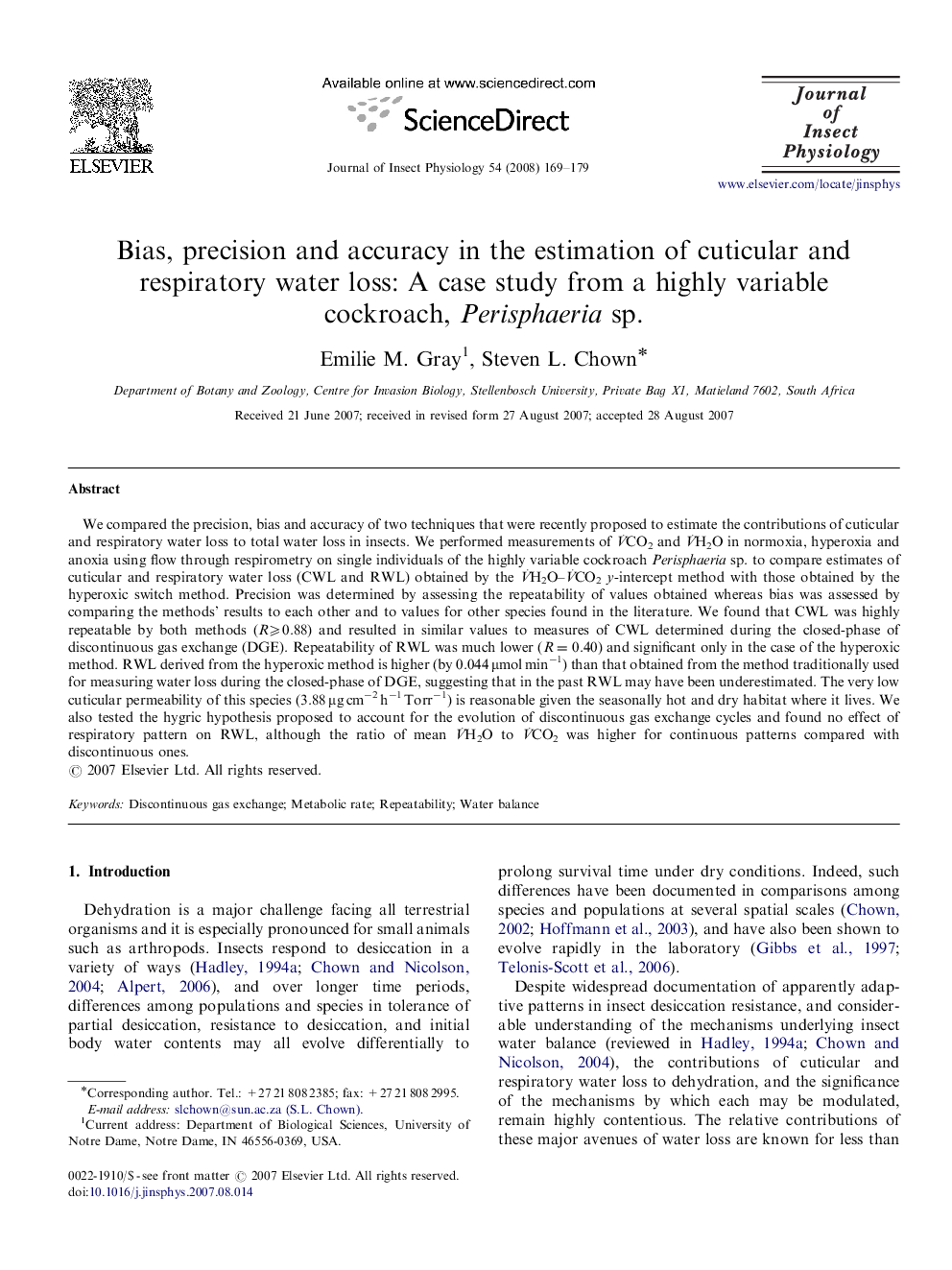| Article ID | Journal | Published Year | Pages | File Type |
|---|---|---|---|---|
| 2841428 | Journal of Insect Physiology | 2008 | 11 Pages |
Abstract
We compared the precision, bias and accuracy of two techniques that were recently proposed to estimate the contributions of cuticular and respiratory water loss to total water loss in insects. We performed measurements of VËCO2 and VËH2O in normoxia, hyperoxia and anoxia using flow through respirometry on single individuals of the highly variable cockroach Perisphaeria sp. to compare estimates of cuticular and respiratory water loss (CWL and RWL) obtained by the VËH2O-VËCO2y-intercept method with those obtained by the hyperoxic switch method. Precision was determined by assessing the repeatability of values obtained whereas bias was assessed by comparing the methods' results to each other and to values for other species found in the literature. We found that CWL was highly repeatable by both methods (R⩾0.88) and resulted in similar values to measures of CWL determined during the closed-phase of discontinuous gas exchange (DGE). Repeatability of RWL was much lower (R=0.40) and significant only in the case of the hyperoxic method. RWL derived from the hyperoxic method is higher (by 0.044 μmol minâ1) than that obtained from the method traditionally used for measuring water loss during the closed-phase of DGE, suggesting that in the past RWL may have been underestimated. The very low cuticular permeability of this species (3.88 μg cmâ2 hâ1 Torrâ1) is reasonable given the seasonally hot and dry habitat where it lives. We also tested the hygric hypothesis proposed to account for the evolution of discontinuous gas exchange cycles and found no effect of respiratory pattern on RWL, although the ratio of mean VËH2O to VËCO2 was higher for continuous patterns compared with discontinuous ones.
Related Topics
Life Sciences
Agricultural and Biological Sciences
Insect Science
Authors
Emilie M. Gray, Steven L. Chown,
